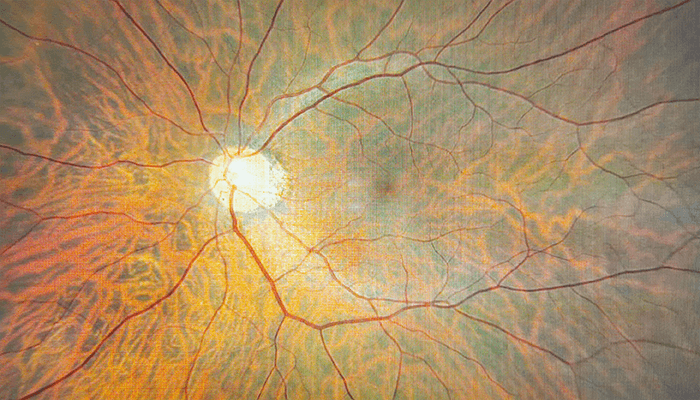
Mapping the eye
Researchers from the National Eye Institute have created a high resolution map that reveals complex DNA organization within human retina cells. Using deep Hi-C sequencing, a tool used for studying 3D genome organization, the map details 704 million contact points within retinal cell chromatin. Researchers added to this by integrating the chromatin topology map with datasets on retinal genes and regulatory elements. The resulting comprehensive network provides a dynamic picture of interactions within chromatin over time and provides insights into the regulations of gene expression and retinal function in both rare and common eye diseases (1).
Battling blindness
A new drug, named pegcetacoplan, has been found to slow the progression of geographic atrophy by preventing cell death in the retina. Also known as a complement system inhibitor, the new drug reduces the area of atrophy by 16 to 18 percent in patients treated every other month, and by 19 to 22 percent in patients taking a monthly dosage over a one year period. Although the results are promising, researchers emphasize that the new drug does not reverse vision loss and, if approved by the FDA, patients will likely require treatment for an extended period of time (2).
Skipping treatment
The eye care community is urged to be more proactive when reminding, educating, and empowering AMD patients to seek treatment. Although anti-VEGF eye injections allow more than 90 percent of patients to keep their vision, patients are required to attend follow up appointments every one to three months. The failure to attend these appointments can result in irreversible eye damage and blindness. Between 2013 and 2015, follow up appointment attendance dropped by 11 percent and researchers suggest that, since the pandemic, the rates may be even higher. With one in nine people foregoing sight-saving injections, the need to find alternative treatments that require fewer follow-up visits is paramount, says the AAO (3).
Getting to the heart of it
Researchers from the Beijing Eye Study have been investigating the links between the thickness of a single layer of the retina and blood pressure. Using OCT and a multiple surface segmentation solution the researcher could analyze single layers of the retina one at a time. Higher blood pressure was correlated with a thinner retinal nerve fiber layer and a thinner ganglion cell layer. At the same time, the research found links between increased blood pressure and a thickening of the inner nuclear layer of the retina. This study’s segmentation of the various retinal layers offers ways in which the detection of a whole range of retinal diseases can be detected more precisely (4).
In other news...
Predicting disease
New research finds that AI-enabled imaging of the retina can accurately predict cardiovascular disease and death, without the need for blood tests or blood pressure measurement (5).
Retina representation
A cross sectional study comparing the demographics of US-based diabetic macular edema and retinal vein occlusion found that clinical trials were not representative of the racial and ethnic diversity of the general population (6).
Capturing cells
A new, ultrahigh-speed multimodal and multifunctional adaptive optics system achieves exquisite resolution for viewing retinal cells and structures (7).
Reducing inflammation
A powerful new enzyme has been found to reduce oxidative stress and inflammation in the retina in patients with diabetic retinopathy and retinopathy of prematurity (8).
References
- C Marchal et al., Nat Commun, 13, 5827 (2022). PMID: 36207300.
- AAO (2022). Available at: http://bit.ly/3ThAYMe.
- AAO (2022). Available at: http://bit.ly/3hDku3i.
- H Xie et al., British Journal of Ophthalmology (2022).
- A Rudnicka et al., BMJ (2022). Available at: http://bit.ly/3TJW5Xz.
- SL Baxter, JAMA Ophthalmol (2022). Available at: https://bit.ly/3TnDK2H.
- Z Liu et al., Biomed Opt Express, 13, 5860 (2022).
- AA Abdelrahman et al., Cells, 11, 2890 (2022). PMID: 36139465.
